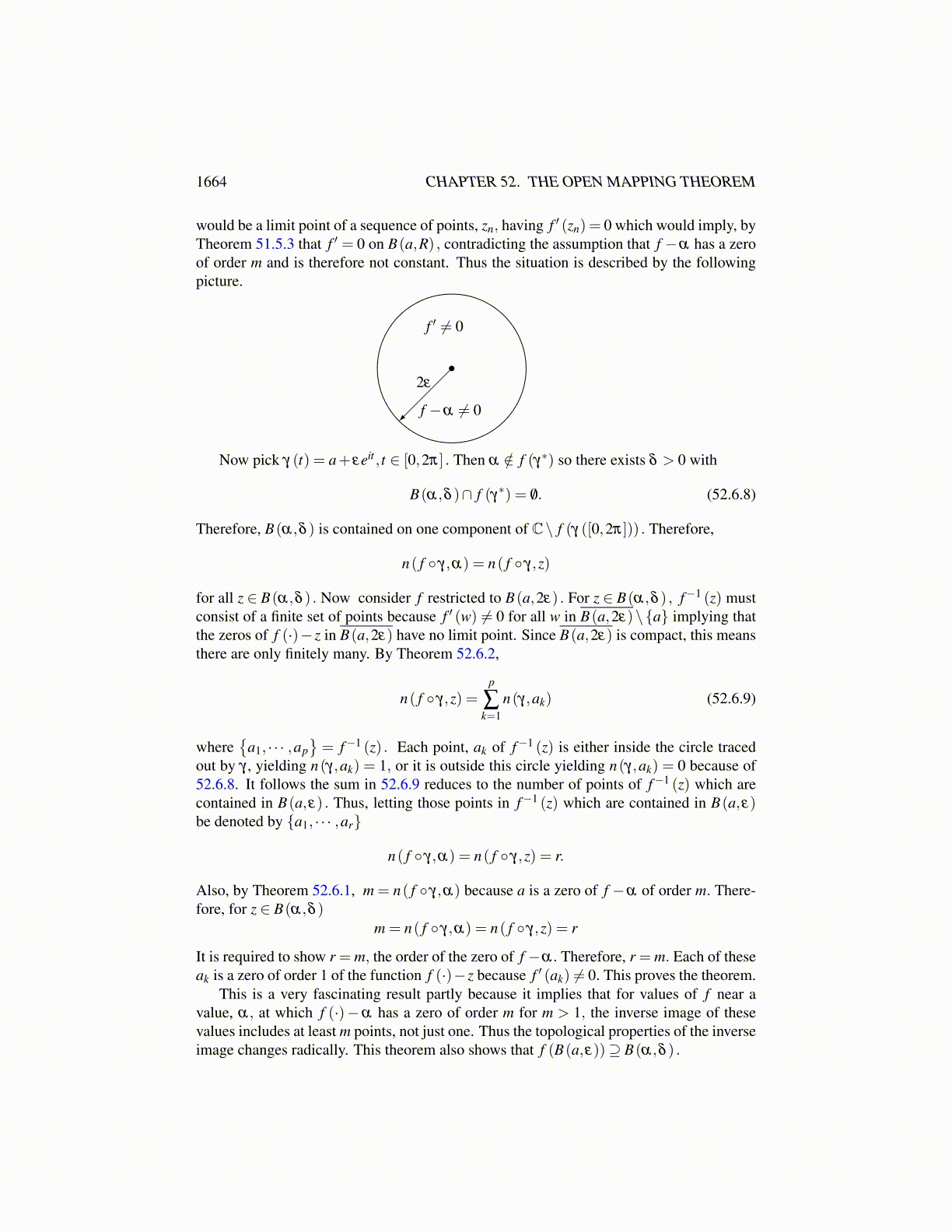
1664 CHAPTER 52. THE OPEN MAPPING THEOREM
Ωfγ
a1
a2a3
f (γ([a,b]))
α
Theorem 52.6.2 Let Ω be a region, let γ : [a,b]→ Ω be closed continuous, and boundedvariation such that n(γ,z)= 0 for all z /∈Ω. Also suppose f : Ω→C is analytic and that α /∈f (γ∗) . Then f ◦ γ : [a,b]→ C is continuous, closed, and bounded variation. Also suppose{a1, · · · ,am}= f−1 (α) where these points are counted according to their multiplicities aszeros of the function f −α Then
n( f ◦ γ,α) =m
∑k=1
n(γ,ak) .
Proof: It is clear that f ◦ γ is continuous. It only remains to verify that it is of boundedvariation. Suppose first that γ∗ ⊆ B⊆ B⊆Ω where B is a ball. Then
| f (γ (t))− f (γ (s))|=∣∣∣∣∫ 1
0f ′ (γ (s)+λ (γ (t)− γ (s)))(γ (t)− γ (s))dλ
∣∣∣∣≤ C |γ (t)− γ (s)|
where C ≥max{| f ′ (z)| : z ∈ B
}. Hence, in this case,
V ( f ◦ γ, [a,b])≤CV (γ, [a,b]) .
Now let ε denote the distance between γ∗ and C \Ω. Since γ∗ is compact, ε > 0. Byuniform continuity there exists δ = b−a
p for p a positive integer such that if |s− t|< δ , then|γ (s)− γ (t)|< ε
2 . Then
γ ([t, t +δ ])⊆ B(
γ (t) ,ε
2
)⊆Ω.
Let C ≥ max{| f ′ (z)| : z ∈ ∪p
j=1B(γ (t j) ,
ε
2
)}where t j ≡ j
p (b−a) + a. Then from whatwas just shown,
V ( f ◦ γ, [a,b]) ≤p−1
∑j=0
V(
f ◦ γ,[t j, t j+1
])≤ C
p−1
∑j=0
V(γ,[t j, t j+1
])< ∞
showing that f ◦γ is bounded variation as claimed. Now from Theorem 51.7.15 there existsη ∈C1 ([a,b]) such that
η (a) = γ (a) = γ (b) = η (b) , η ([a,b])⊆Ω,